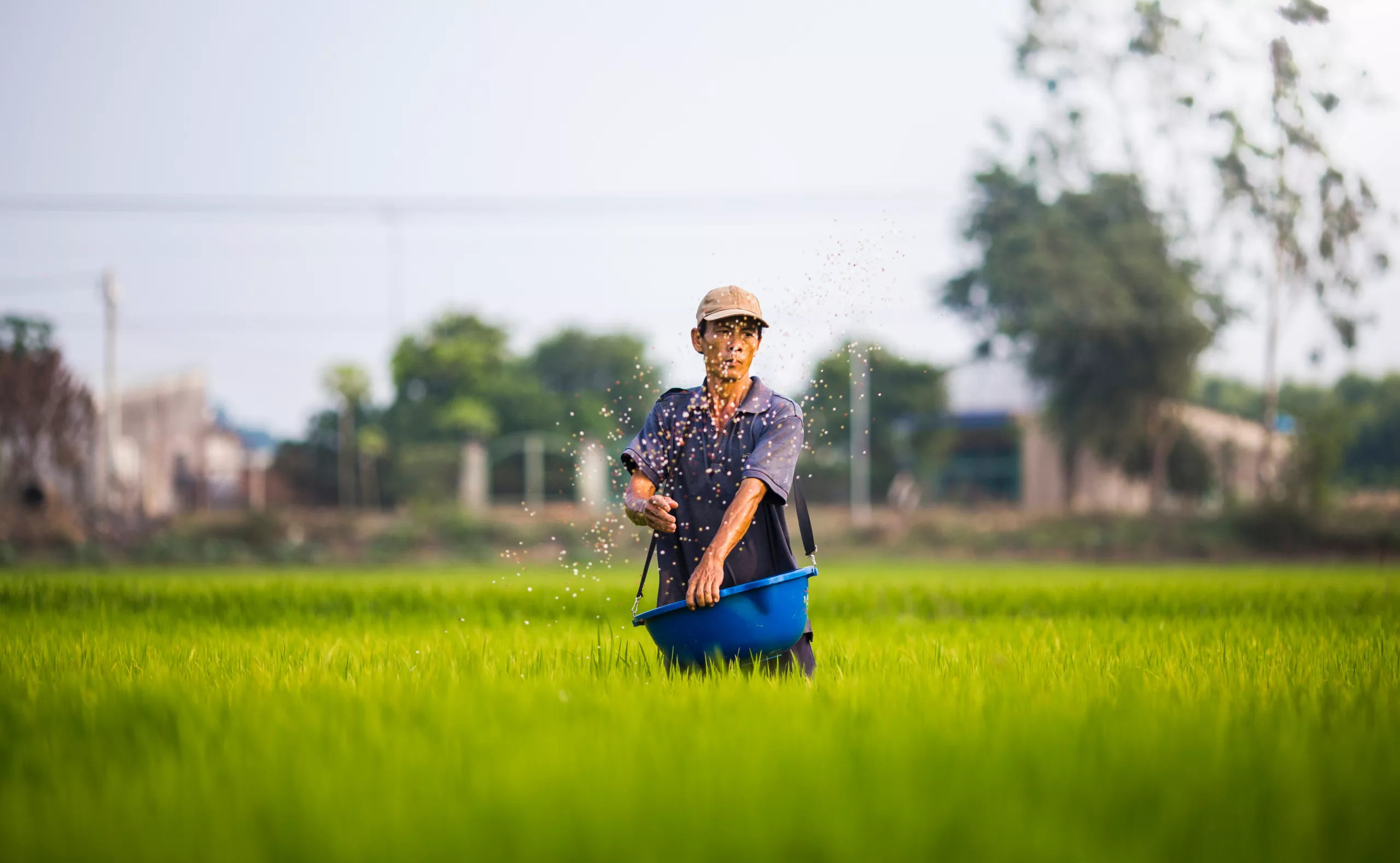Sustainable farming, or, in a broader term, sustainable agriculture, is a farming practice where we meet the needs of the existing generation without compromising on the ability of future generations to meet their needs for food and textiles. This practice also ensures environmental health and social and economic equity. Sustainable farming techniques mimic nature to preserve soil and water quality and protect biodiversity while helping us achieve sustainable development goals (SDGs).
Now the question is, does sustainable farming really make a difference? Yes, It does. United Nations Environment Program reports that sustainable agriculture reduces energy use by up to 56% and greenhouse gas emissions by 64% per hectare. At the same time, it supports greater biodiversity levels and social and economic equity. Let’s get a deeper dive into the world of sustainable agriculture and see how things work.
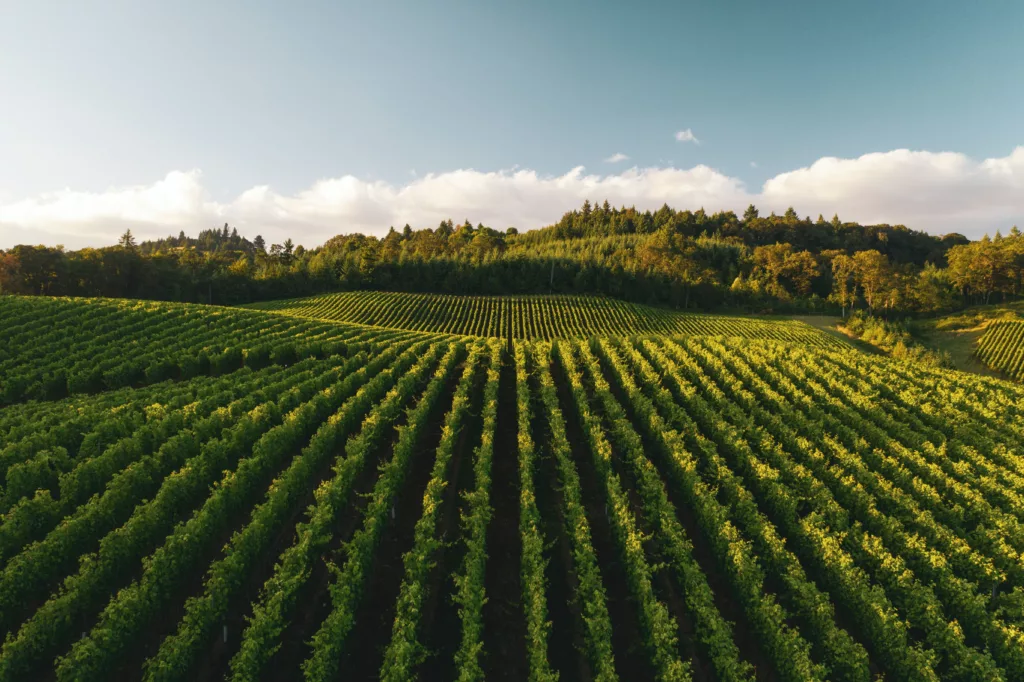
History and Evolution of Sustainable Farming
Agricultural practices changed drastically after World War II; the growing population equaled increased food and fiber production demand. As early as 1946, President Harry Truman of the USA voiced his concerns and warned the people about the coming ’famine of half the world’.
However, a Mexican agricultural scientist, Norman Borlaug, was already working on the problem to feed the growing population. He initiated practices like hybrid crossing, selective breeding, fertilizing, and using pesticides to increase the crop yield and get more grains from one acre of land. By 1963, Borlaug’s varieties accounted for 95% of Mexico’s wheat production, resulting in a six-fold increase from 1944.
This marked the beginning of the Green Revolution. As a result, farmers worldwide started using more chemical and synthetic fertilizers, insecticides, herbicides, fungicides, high-yielding crop varieties, advanced technologies, machinery, and controlled irrigation for cultivation and harvesting crops. Norman Ernest Borlaug, a central figure in the Green Revolution, won the Nobel Peace Prize in 1970 for his contribution to feeding the hungry world.
But simultaneously, another movement caught the wind: the sustainable agricultural/sustainable farming movement—the Land Fellowship, an Ontario-based group established in the early 1950s, aimed to promote sustainable agriculture. Despite multiple academic studies on sustainable issues in the 1950s and 1960s, both received minimal attention from the agricultural establishment and the general public. However, there was a slow but steady increase in interest in the smaller farm community.
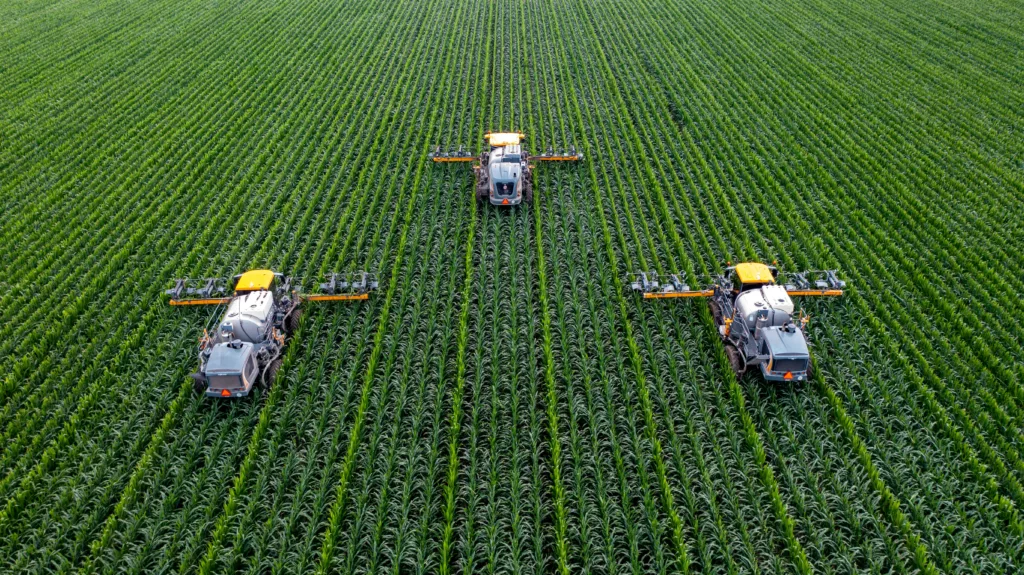
In 1962, Rachel Carson’s book “Silent Spring” drew attention to questionable agricultural practices, including the harmful effects of DDT on wildlife, the environment, and human health. This increased environmental awareness in the 1970s, fueled the sustainable agriculture movement and organic farming. The EPA banned DDT in 1972 due to its negative impact on the environment.
The Consultative Group on International Agricultural Research emphasized sustainable food production by the early 1980s, including improved nutrition and well-being of the poor in their agenda. CGIAR expanded its research to support small, low-income farmers in marketing their crops and feeding local communities. In the 1990s, CGIAR prioritized sustainable food security, agriculture, climate resilience, and livelihoods. Thus, paving the way for sustainable farming practices.
Principles of Sustainable Farming
Sustainability in agriculture is defined as promoting endless regeneration in agricultural environments. It balances the needs of farmers with resource conservation, considering both short and long-term economics. 5 Key principles of sustainability, as stated by the Food and Agricultural Organization, are:
- Increased production, employment, and value addition in food systems
- Protect and enhance natural resources
- Improve livelihood and foster inclusive economic growth
- Enhance the resilience of people, communities, and ecosystems
- Adapt governance to new challenges
Sustainable practices are often executed through the adoption of environmentally appropriate technologies. And it considers reconciliation ecology, which is preserving biodiversity in human landscapes.
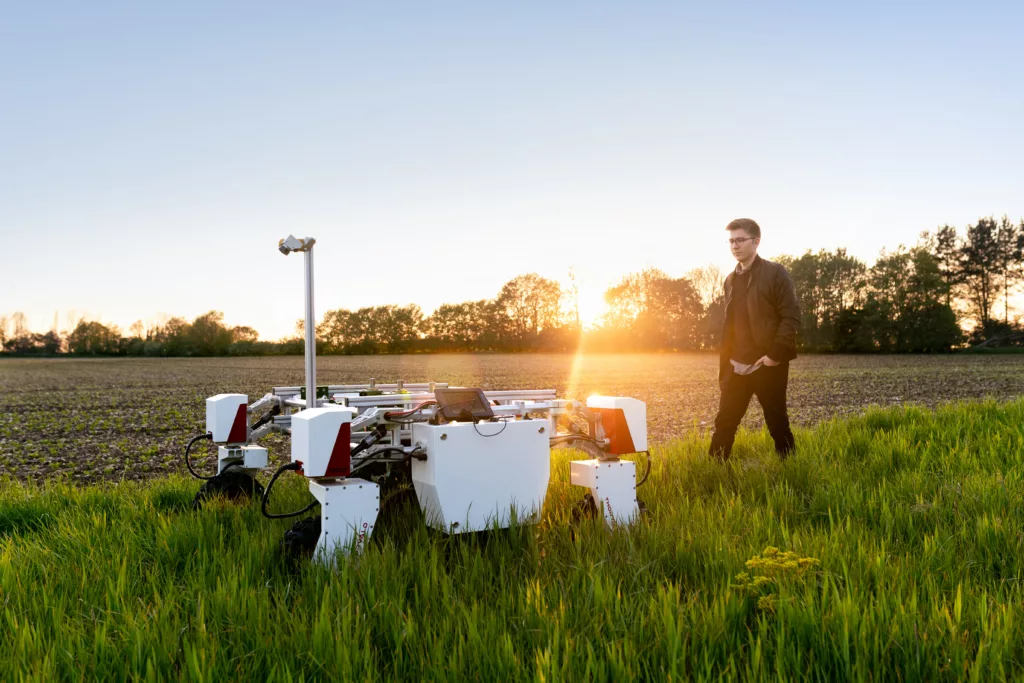
Sustainable Farming Methods and Practices
Organic farming is what comes to our mind when someone mentions sustainable farming. However many other methods and practices align with sustainable farming principles and are 100% organic or at least a more significant part in the long run. Some of these methods include:
Regenerative agriculture
Regenerative agriculture combines various sustainable farming techniques rather than being a single practice. It aims to improve food and farming systems by regenerating topsoil, increasing biodiversity, and enhancing ecosystem services. At the same time, it supports biosequestration, improving the water cycle and increasing resilience to climate change.
Permaculture
Permaculture involves designing and maintaining agricultural ecosystems with the diversity, stability, and resilience of natural ecosystems in mind. The permaculture principle can be applied to several ecosystems like local communities, water supply systems, energy systems, and food production.
Producing food through permaculture requires intention, design, and efficient systems that banish waste. Emphasis is placed on using perennial crops that function together in a designed system mimicking natural ecosystems.
Organic farming
The global market for organic food and beverages was valued at $USD 208.19 billion in 2022, and it is projected to rise at a compound annual growth rate of 11.7% from 2023 to 2030. Organic farming is a sustainable system that promotes soil fertility and biodiversity. It prohibits the use of synthetic pesticides, antibiotics, fertilizers, genetically modified organisms, and growth hormones, with few rare exceptions.
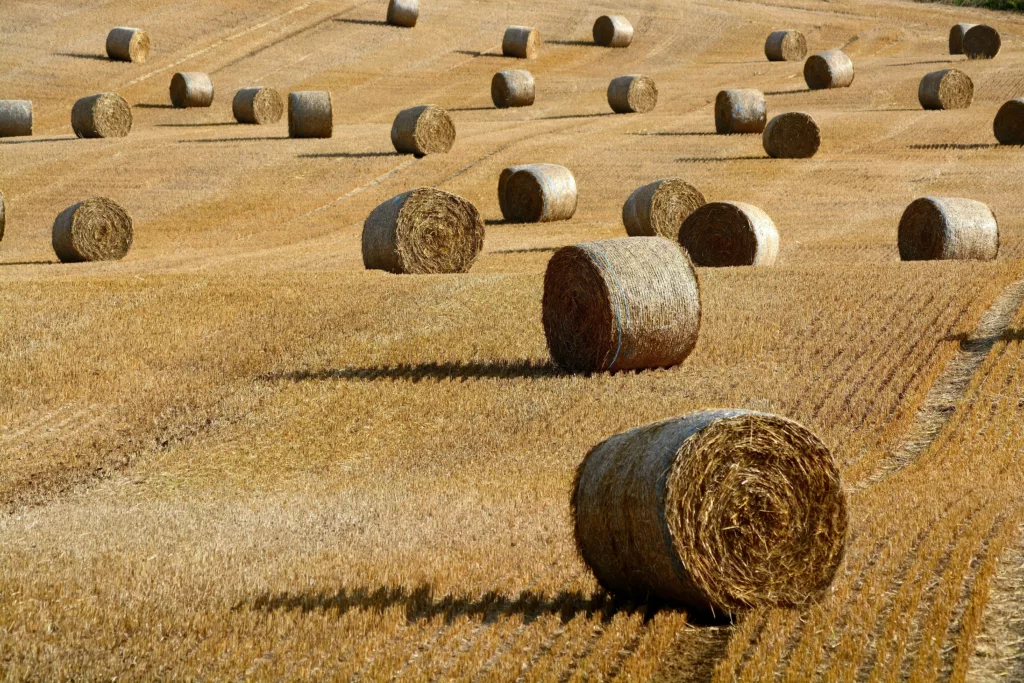
Biodynamic Agriculture
Biodynamic agriculture is a holistic approach to farming based on pseudo-science and esoteric concepts, first adopted by Rudolf Steiner in 1924. The farms are managed as one living entity where every species intertwines and promotes each other’s overall ecosystem health.
Biodynamic farming uses natural alternatives and lunar planting cycles instead of conventional farming. Chemical fertilizers are replaced with microbial agents like mycorrhizae, algae, and bacteria. And chemical pesticides by the use of neem and salt sprays.
Hydroponics and Aquaponics
Hydroponics is a technique that uses a water-based mineral solution and a substrate like coconut coir or perlite to grow plants rather than using soil. Hobbyists, commercial enterprises, and small farmers commonly practice this. Some notable advantages include easy elimination of weeds, higher yields, healthy and fast plant growth, and automation is also possible.
Similarly, aquaponics is a combination of two methods, namely, aquaculture and hydroponics. The nutrient-rich water from aquaculture is used in the growing of hydroponic plants. Though aquaponics is a water-efficient, climate-adaptive, and environmentally friendly method, the initial cost of set-up, daily maintenance, and electricity consumption are notable cons.
Agroforestry
Agroforestry is an innovative and sustainable farming practice that utilizes a combination of trees, shrubs, and vines alongside crops and livestock. This technique is designed to mimic natural ecosystems and provide long-term income for farmers.
By integrating a variety of plant species and animals, agroforestry creates a diverse and resilient agricultural system that benefits both the environment and local communities. This approach not only helps reduce the negative impacts of traditional farming practices but also promotes biodiversity and enhances the ecosystem’s overall health.
Polyculture and Crop Rotation
In polyculture, multiple species of crops are grown in one area. These different crops complement each other and help achieve greater diversity in the same plot while allowing you to use all the resources to their full potential. Increased diversity will make your crop and the system more resilient to environmental factors like weather fluctuations.
Similarly, crop rotation involves planting different crops on the same piece of land sequentially to improve soil health, optimize nutrients, and deal with pests and weeds more easily. These alternate crop rotation and polyculture practices promote a sustainable and resilient ecosystem with profitability.
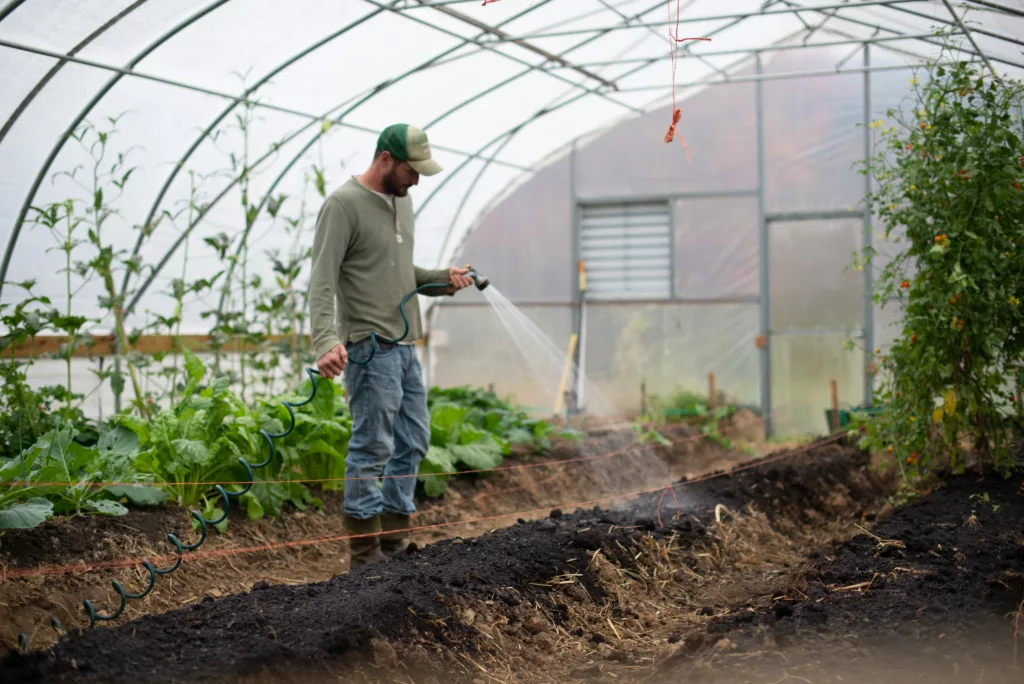
Cover Crop
Crop covers are plants that are planted to cover and protect the soil rather than harvesting. A crop cover is viewed as a long-term investment to improve fertility, and soil health, enhance water availability, help control pests and diseases, increase biodiversity, and bring a host of other benefits to the farm. They are shown to increase crop yields, soil health, diversity, and resilience to extreme weather and attract pollinators.
Natural Pest Predator
The farm should be viewed as a natural ecosystem rather than a factory. Natural predators like birds, parasites, and pathogens can act as a natural mechanism to get rid of the pests on the farm. These natural enemies can be promoted by growing flowering plants, releasing beneficial insects, and providing habitat for them.
Apart from these notable techniques, several other practices like drip irrigation, mulching, waste and water management, and animal integration are used in a sustainable farm. The goal is to have a holistic plan that integrates every aspect of the farms, thus helping promote sustainability.
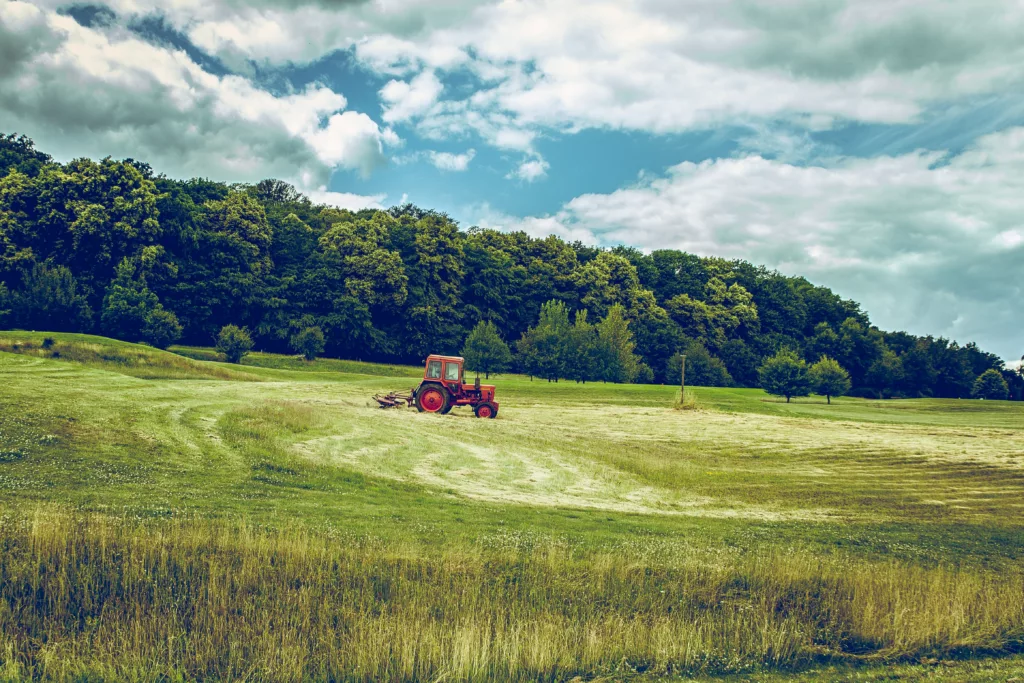
Benefits of Sustainable Farming
Sustainable farming is a holistic approach that considers environmental well-being, economic profits, and social well-being. The growing population and rising demand for food and textile in the coming years makes it imperative to practice sustainability for the overall well-being of the planet. Benefits of sustainable farming include:
Environmental Benefits
Sustainable farming reduces the excessive reliance on natural resources while also reducing waste. Careful farming methods like crop rotation, intercropping, and crop cover help maintain soil and water quality while increasing yields.
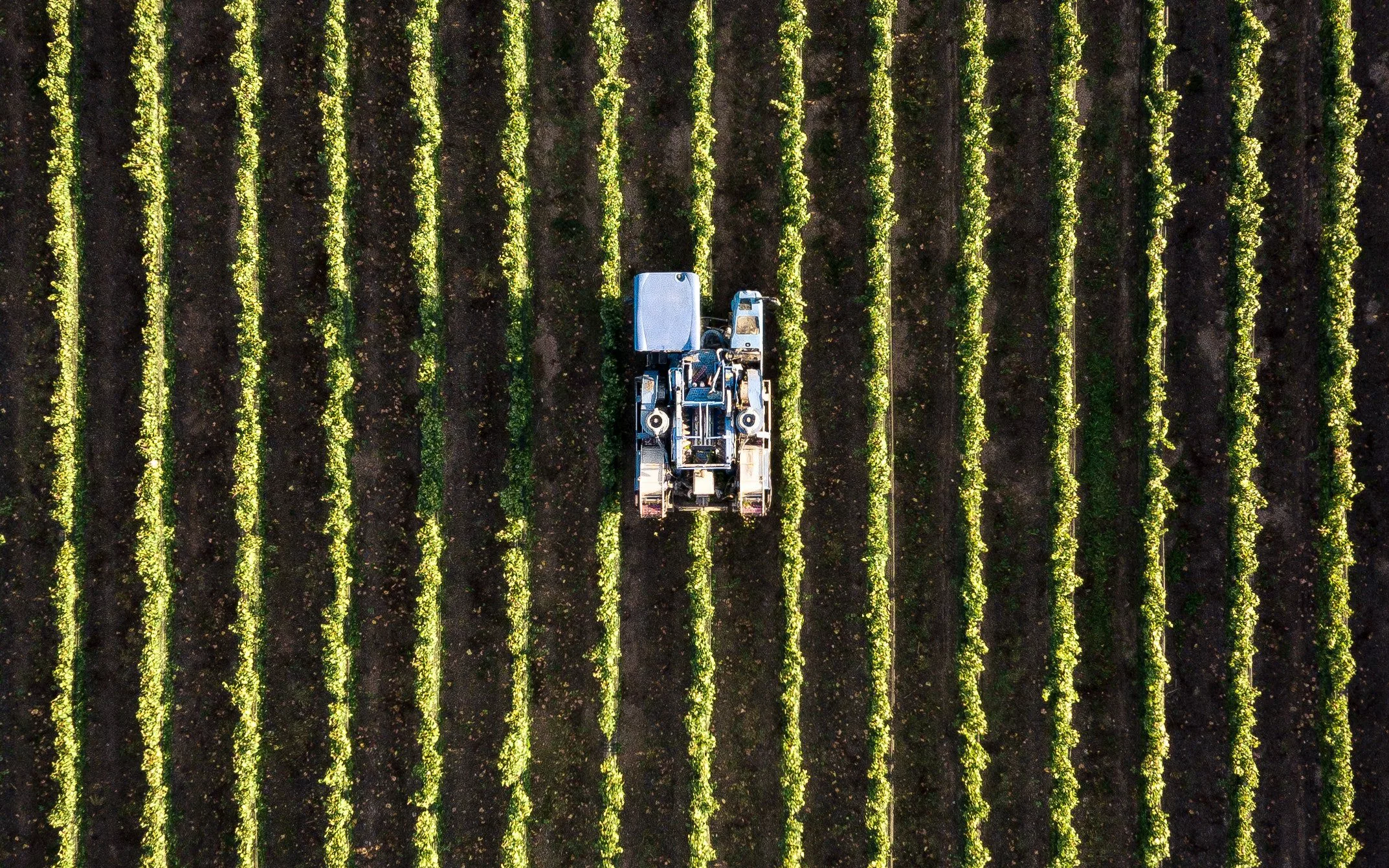
Economic Benefits
Sustainable agriculture can improve local economies and benefit small-scale farmers by reducing resource usage and expenses while being more resilient to natural disasters like droughts or floods.
Social Benefits
Community-based local farming operations are supported by sustainable agriculture, ensuring dependable food production and social equity. By using sustainable production methods, agricultural harvests can become more reliable and adaptable over time. This allows for consistent access to affordable food, regardless of economic situation.
Tips and Tricks for Successful Sustainable Farming
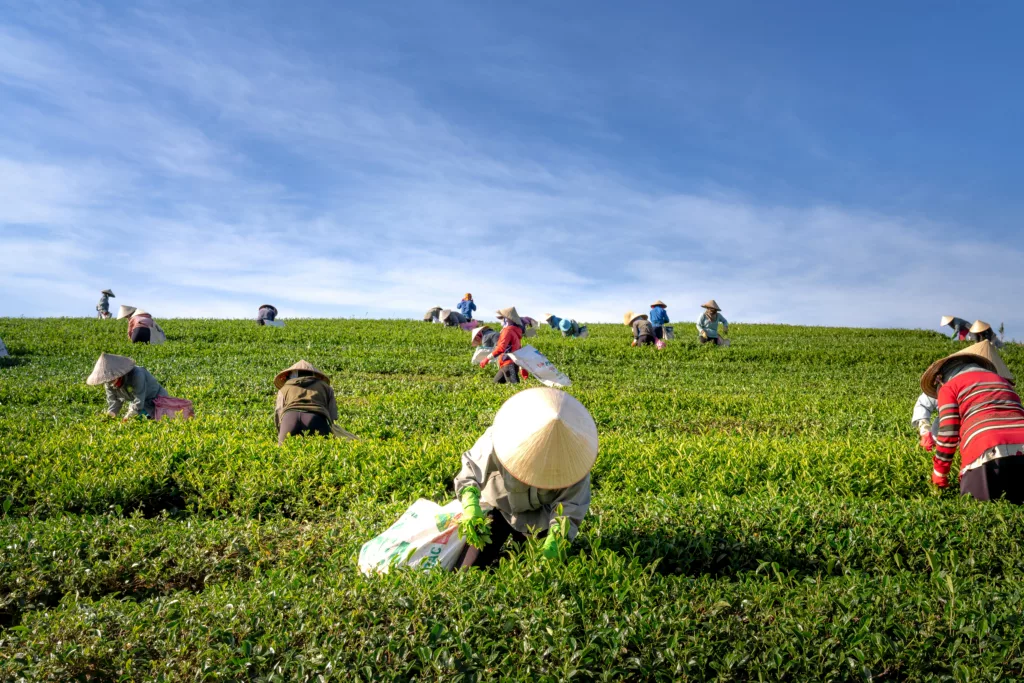
Sustainable farming is about producing food that preserves the environment and conserves resources for future generations. Embracing technological innovation, community collaboration and engagement, and continuous learning will be immensely helpful in promoting sustainable agriculture.
Precision agriculture is one such innovative farming management approach that uses observation, measurement, and response to improve sustainability in crop and livestock production. Precision agriculture often utilizes technology such as IoT and GPS to automate agricultural operations and enhance diagnosis and decision-making.
Also, drones are used to monitor crop health, pest infestations, and overall farm conditions. They can provide a bird’s eye view and help in the early detection of problems. Investments are made in soil testing kits or services to understand the soil’s nutrient content and pH level. This helps decide on fertilization application and irrigation decisions. Solar panels and wind turbines can also be installed on the farms to reduce the dependency on non-renewable energy sources.
Community Engagement and Collaboration play an important role in promoting sustainable farming. Farmers cooperatives can be made where they can pool resources, share knowledge, and gain collective bargaining power in the market. Community-supported agriculture (CSA) is a system that connects producers and consumers by offering subscription-based produce boxes. This ensures a steady income for farmers and reduces waste.
Also, local markets should prioritize selling locally produced food, thus reducing the carbon footprint associated with transportation while supporting the local economy. Collaborating with local educational institutes or universities will allow for testing and experimenting with new sustainable farming methods.
Continuous learning and participation in training like workshops, conferences, online courses, and seminars focused on sustainable farming will be a valuable learning opportunity for the farmers as well as the local community. Visiting other successful sustainable farms to learn the strategies for implementation on your farm and staying up to date on recent discoveries and research is invaluable in the ever-evolving field of sustainable farming.
Sustainable Farming Promotes Biodiversity
Agriculture, as an industry, plays a pivotal role in global economies, providing sustenance and livelihood opportunities to millions worldwide. It is estimated that every day, agriculture produces an astounding 23.7 million tons of food, a significant portion of which people across the globe consume. Moreover, it provides employment opportunities to 2.5 billion people, many of whom reside in rural areas. In developing countries, the industry accounts for 29% of GDP and 65% of jobs, making it a critical source of income and livelihood for many communities.
The significance of biodiversity in agriculture cannot be overstated, as it has played a crucial role in the evolution of farming practices over the past 10,000 years. It serves as the origin point for all crops and domesticated livestock species and as the bedrock of ecosystem services supporting agriculture and human well-being. Biodiversity and agriculture are symbiotic, with sustainable agricultural practices promoting and benefiting from biodiversity.
The preservation of biodiversity is of utmost importance when it comes to ensuring sustainable food production, nutrition, and livelihoods. This is because the genetic diversity found throughout the world is what provides us with a multitude of crop varieties and animal breeds that are vital to agriculture. Furthermore, biodiversity is crucial in supporting soil fertility, pollination, and pest control, all of which are essential components of a healthy and thriving ecosystem. Without preserving biodiversity, we risk losing these vital resources and compromising the sustainability of our food systems.
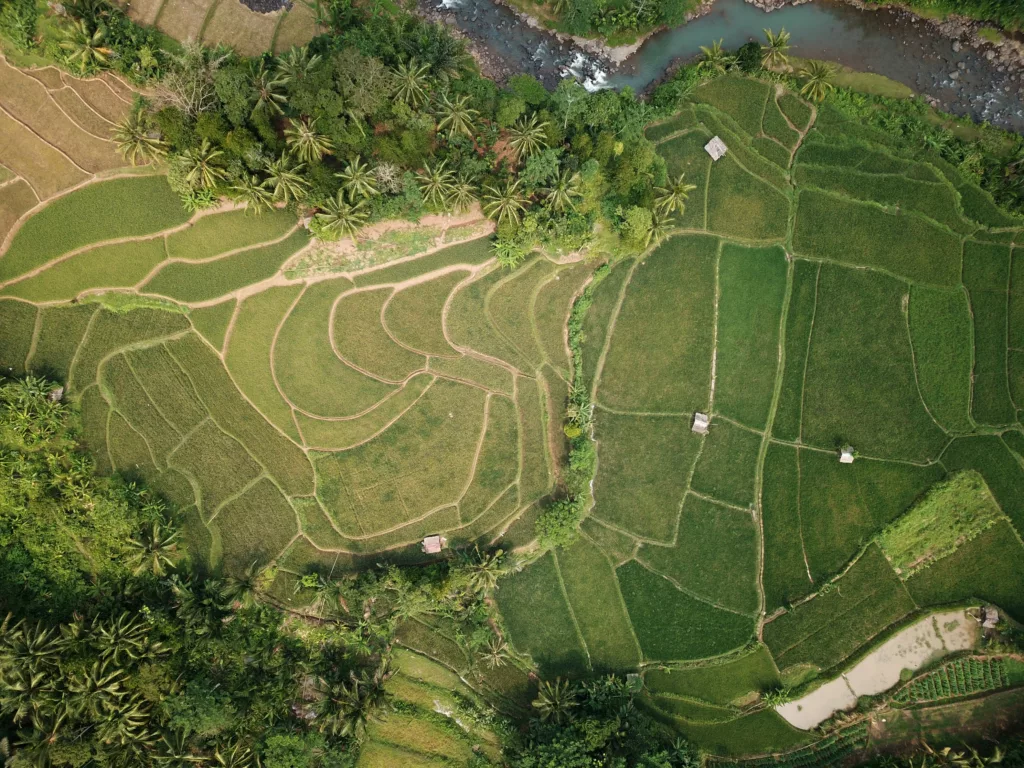
Challenges in Sustainable Farming
The three dimensions of sustainable farming are social, environmental, and economic pillars, which are the core pillars of sustainability.
- The social pillar addresses the concerns about the conditions societies are born, growing in, and learning from. It involves transitioning from traditional agricultural practices to sustainable ones to improve society and conditions.
- The environmental pillar focuses on protecting the environment for future generations by addressing climate change and promoting sustainable farming practices.
- The economic pillar aims to foster economic growth and stability through sustainable agriculture while minimizing livelihood disruptions.
All three pillars – economic, social, and environmental – must be addressed to identify and overcome the barriers that prevent adopting sustainable agricultural practices.
Transitioning from conventional to sustainable agriculture practices is a challenge that requires addressing social barriers, including cultural shifts, collaboration, incentives, and legislation. Both farmers and consumers need to make significant behavioral changes to promote sustainable agriculture effectively. Collaboration and cooperation are necessary for farmers to transition to sustainable practices with ease. However, competition and profitability may pose a challenge. Incentives such as public policy, mandatory laws, and advertisements can help overcome social barriers.
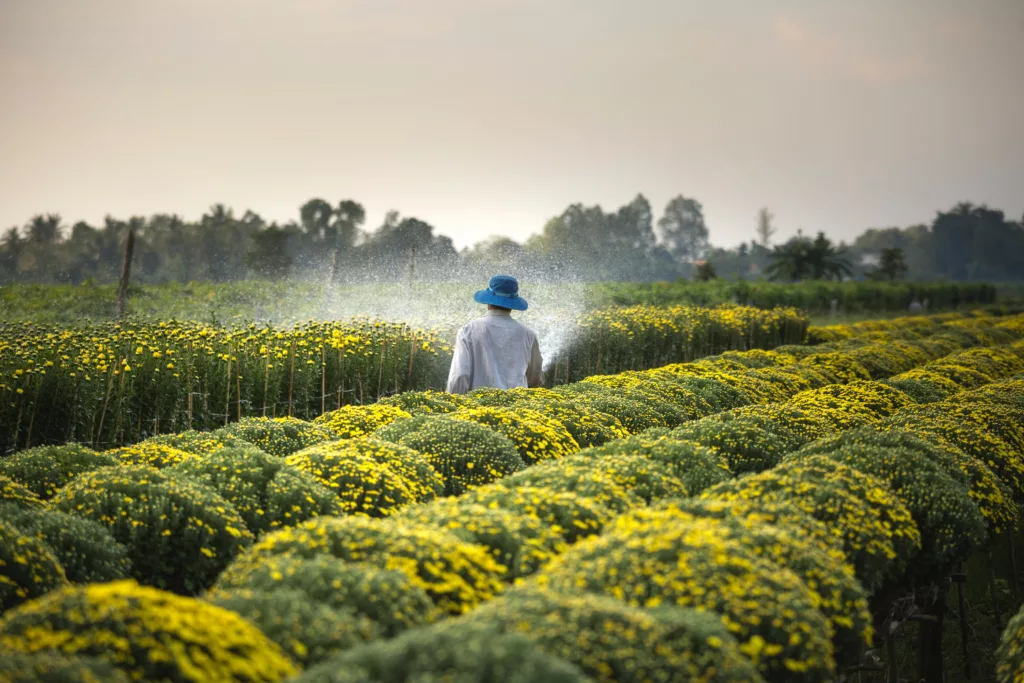
Maintaining the natural ecosystem is difficult due to environmental barriers like climate change and pesticide use. While pesticides are necessary to keep food production affordable, they can also hinder conservation efforts. Farmers are encouraged to adopt green pesticides for sustainable agriculture despite the higher production cost, as they are less harmful to human health and habitats but usually entail more costs. Climate change is a growing obstacle for farmers, as they have little control over place-based barriers like weather, topography, and soil quality.
These barriers can lead to losses in production and reluctance to switch from conventional practices. Significant environmental benefits of sustainable agriculture are not immediately visible, including improved soil structure, reduced soil and nutrient loss, and increased beneficial microorganisms. In contrast, conventional agriculture may appear cost-effective on the surface. Still, its long-term environmental costs, such as biodiversity loss, disrupted ecosystems, and poor water quality, are hidden and “externalized.”
Implementing sustainable agricultural practices is hindered by economic obstacles such as low profitability, lack of financial incentives, and inadequate capital investments. Adopting sustainable methods requires significant investment in training, technology, and products, which can be expensive. Conventional farming practices allow for mass production and higher profitability, making it difficult to transition to sustainable agriculture with low production capacity.
Case Studies: Success Stories in Sustainable Farming

Supporting Sustainable Food and Agriculture in Tanzania
Agriculture is a significant contributor to Tanzania’s economy, accounting for 25% of GDP and supporting 80% of the population. In October 2019, Tanzania and FAO held a “National Stakeholders Workshop on Sustainable Food and Agricultural Systems Transformation for Resilient Livelihoods and Food Security” to improve the agricultural institutions and actors.
Enhancing Biodiversity for Food and Nutrition in Brazil, Kenya, Sri Lanka and Turkey
Brazil, Kenya, Sri Lanka, and Turkey boast diverse ecosystems, and their rich agro-biological diversity has led to the emergence of a wealth of traditional and indigenous ecological knowledge. This unique expertise and connection to local resources and ecosystem services underpin food supply chains in these countries and beyond.
The project aimed to enhance the capacity of stakeholders to improve the well-being, livelihoods, and food security of smallholder and vulnerable communities. It was co-financed by the Global Environment Facility (GEF) and implemented by Bioversity International with support from FAO, UNEP, and partners from various sectors.
Championing Sustainable Agriculture in the Caribbean region of Colombia
Colombia is one of the 17 most biodiverse countries, housing 15% of the world’s endemic species. However, economic growth driven by natural resource exploitation has caused significant environmental damage and fragmentation of vital ecosystems and protected areas.
FAO was selected by Colombia and GEF to implement Conexión BioCaribe in 2016. The strategy aims to preserve the Caribbean region’s strategic ecosystems, covering 10% of Colombia and housing 9.7 million people. Today, the project in Colombia’s Caribbean region positively impacts marine and terrestrial ecosystems. This is due to connectivity corridors, increased protected areas, and sustainable production and conservation plans.
Resources for Further Learning
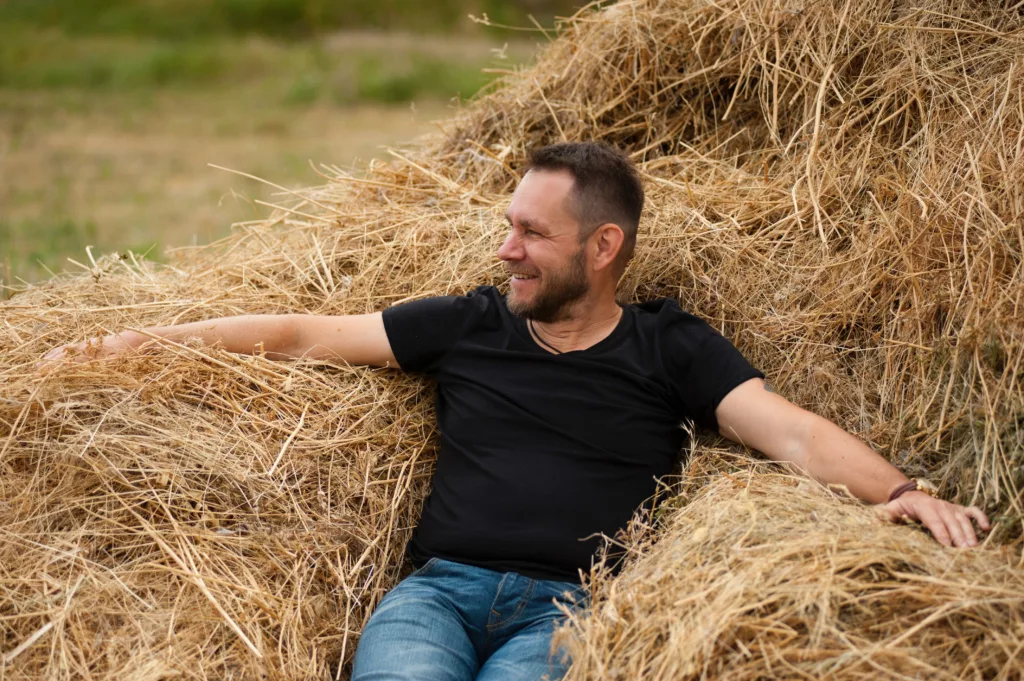
Here we have linked a few courses and links to documentaries on sustainable farming to help you gain more knowledge.
Discover Best Practice Farming for Sustainable 2050
This is a course offered by Coursera and is free to enroll in and learn from. You can also get a certificate but you’ll have to pay the fee.
Growing Sustainable Food Organically
This course is free to enroll in and study form. For a certificate, you’ll have to pay a fee.
SDG Indicator 2.4.1 Sustainable Agriculture
This course is free to take and you can also obtain a certificate at the end.
8 Must Watch New Sustainable Agriculture Documentaries
Conclusion
Embracing sustainable farming practices is a commitment to preserving our planet’s resources and a strategic choice for long-term success. By integrating methods like crop rotation, cover cropping, and integrated pest management, farmers can enhance soil health, boost crop yield, and reduce environmental impact.
Diverse practices such as agroforestry, precision agriculture, and community engagement further contribute to sustainable success. As the world seeks solutions for a changing climate and depleting resources, sustainable farming ensures prosperous harvests for generations while safeguarding our planet’s well-being.
Dive deeper into a greener tomorrow! Explore our Home & Lifestyle blogs for insightful tips and inspiration on sustainable living. Every small change makes a big difference. Start your journey now!
